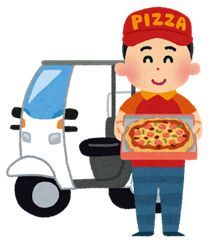Recently, I had the opportunity to introduce newspaper media during a lecture at Komazawa University. Given it was during Golden Week, I expected sparse attendance, but it turned out to be a popular class among students, drawing a lively crowd of about 200 attendees. That said, it's not hard to imagine that current university students rarely have opportunities to actually read newspapers (in fact, when I asked for a show of hands during the lecture, only about 20% of the class read them regularly – still more than the average student, I think). Therefore, I was honestly concerned about how much interest they would have in a lecture titled "Newspaper Media."

Attendees were required to submit reports, and I received about 170 of them for feedback. Among these, I found it somewhat interesting to see scattered comments about newspaper sales agents. Actually, during the lecture, I mainly focused on the business model of newspaper companies and didn't discuss sales agents much. However, it seems that for university students (especially in early spring), newspaper sales agents, who frequently come to solicit subscriptions, are more familiar than the newspaper companies themselves.
That said, my own household subscribes to a certain newspaper. Since renewals happen in May and November, around March, salespeople who looked like college students started coming frequently to request contract renewals. My wife recently applied for a catalog gift as a reward, so she must have extended the contract. Young people seem very rare among sales staff these days. Back when I was a student, newspaper delivery was a popular part-time job. I had several classmates who worked as live-in delivery staff. The early mornings were a defining feature; even when they went to drinking parties, they always left after the first round (around 9:30 PM), so I remember them well. Recently, there seems to be a movement to secure female sales representatives to refresh the image of newspaper sales agencies. Being approached by a young woman rather than a gruff older man does make you feel like you're getting a bit of a bargain when signing up. My wife, however, seems to prefer a young college student.

For ordinary people like my family, the local newspaper distributor might feel more familiar than the newspaper publisher itself. My wife says, "I can tell which distributor it is just by seeing their face through the intercom." I imagine many people have similar experiences. When it comes to direct contact with consumers, it's the distributors, not the publishers, who have that connection. Without needing fancy terms like "contact points" or "CRM," it's likely the local distributor who shapes the image of the newspaper service, for better or worse. These distributors, traditionally just delivering papers, are now reportedly taking on various new services to build relationships with residents. From the residents' perspective, interactions with the distributor are starting to extend beyond the framework of just the newspaper.
One such new service is their role as hubs for community services that contribute to the local area. Elderly monitoring services are a prime example; checking on the health of seniors living alone during newspaper delivery reportedly helps maintain their well-being. Furthermore, in cases of accidents, the previous day's morning paper left in the mailbox has led to early discovery, demonstrating significant effectiveness. This is particularly effective in rural areas with many elderly living alone, and some outlets are even partnering with security companies. Other stores open their spaces for children's activities like "terakoya" (traditional private schools) and storytime sessions, or host Christmas parties and Tanabata decoration events for families. I recall community centers fulfilling this role when I was a child, but now the sales outlets serve as the town's community centers, performing similar functions. In this way, from safety and security to childcare issues and town development challenges, the sales outlets are creating communities where they act as the nucleus for solving local problems.

The second new service is acting as a delivery hub, physically visiting homes for deliveries (sales). Since they deliver newspapers daily, they naturally understand local road conditions well. Using time outside newspaper delivery to deliver other items is becoming increasingly common. For example, by collaborating with local bookstores, they offer home delivery for pre-ordered books. Some stores also partner with local supermarkets to offer shopping代行 services, delivering groceries and daily necessities. This service is reportedly invaluable as a substitute for transportation for elderly individuals who find it difficult to go out and mothers raising children. Additionally, other stores are emerging that visit homes to conduct face-to-face sampling, or utilize insert flyers to actually sell items like health equipment or stage (concert) tickets. Some outlets already handle dry cleaning or rice sales, so in the future, stores combining pizza delivery, bento delivery, or even parcel delivery centers might become commonplace (though morning and evening newspaper deliveries might preclude these services). Could the same delivery person deliver newspapers in the morning, parcels at noon, and pizza in the evening?

While these initiatives serve as reader services by retailers, they are also beginning to gain attention as new business models leveraging these outlets. Newspaper retailers already encompass diverse functions: delivery, collection, payment collection, serving as local hubs, managing customer information, and gathering community intelligence. With nearly 20,000 outlets nationwide—roughly matching the approximately 24,000 post offices—this creates a delivery network and community hubs of comparable scale. This network of retailers, deeply familiar with local residents, holds potential as a valuable platform for area marketing for companies seeking to expand customer touchpoints. For newspaper retailers themselves, while newspaper delivery and insert flyers currently form their two main revenue streams, a third pillar of income could potentially emerge through collaboration with entirely different industries.
Precisely because networking is advancing rapidly in the digital realm, corresponding networking in the physical world is becoming increasingly important. It is precisely because I love newspapers that I want to support the newsstands that form their foundation. And I want to send my heartfelt encouragement to the newspaper delivery staff working there.






